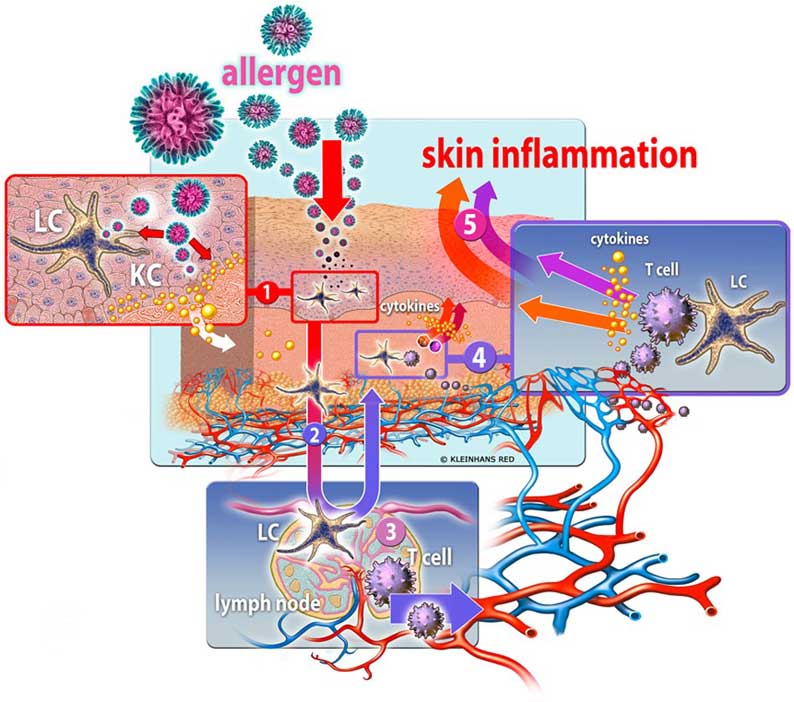Simplified, schematic representation of an allergic inflammation of the skin

Langerhans cells (LC) act as immune sentinel cells in the skin. They take up and process haptens/ antigens from substances, e.g. environmental toxins, insecticides, or pathogens and present them on the surface of their cell. Skin cells (keratinocytes) produce specific messengers (1, cytokines and chemokines) which signal danger to the LC (“danger signals”), inducing the LC to migrate to the nearby lymph nodes (2) thereby undergoing a maturation process. Once there, they activate resting (naive) antigen-specific T-cells (3) by presenting the antigen to the T-cells (similar to a lock and key) and interacting with other cell-surface molecules (signal and adhesion molecules). The stimulated T-cells proliferate and differentiate into T-cells which are e.g. involved in the elimination of pathogens, etc. (T-effector cells) and memory T-cells. The antigen-specific T-cells migrate from the lymph node into the body and into the skin (4). Other immune cells are also stimulated. As a rule, the first contact with the antigen does not cause any clinically relevant findings.
When contact with the antigen is repeated, the required defense cells are present and ready for action. The Langerhans cells once again take up the antigen and present it to the T-cells in the dermis and in the regional lymph node (4). Via signaling molecules which are produced by keratinocytes and activated T-cells, further inflammatory cells (e.g. neutrophile granulocytes, T-cells, macrophages) are recruited from the surrounding tissues and the blood vessel system to the skin which leads to inflammation and its typical symptoms (reddening, swellings, etc.; 5). An allergy develops when the immune system reacts to an otherwise usually harmless antigen in an overly sensitive way. The antigen is then called an allergen.
Source: Wolfgang Bäumer, Institute of Pharmacology and Pharmacy, University of Veterinary Medicine Hannover, Foundation
